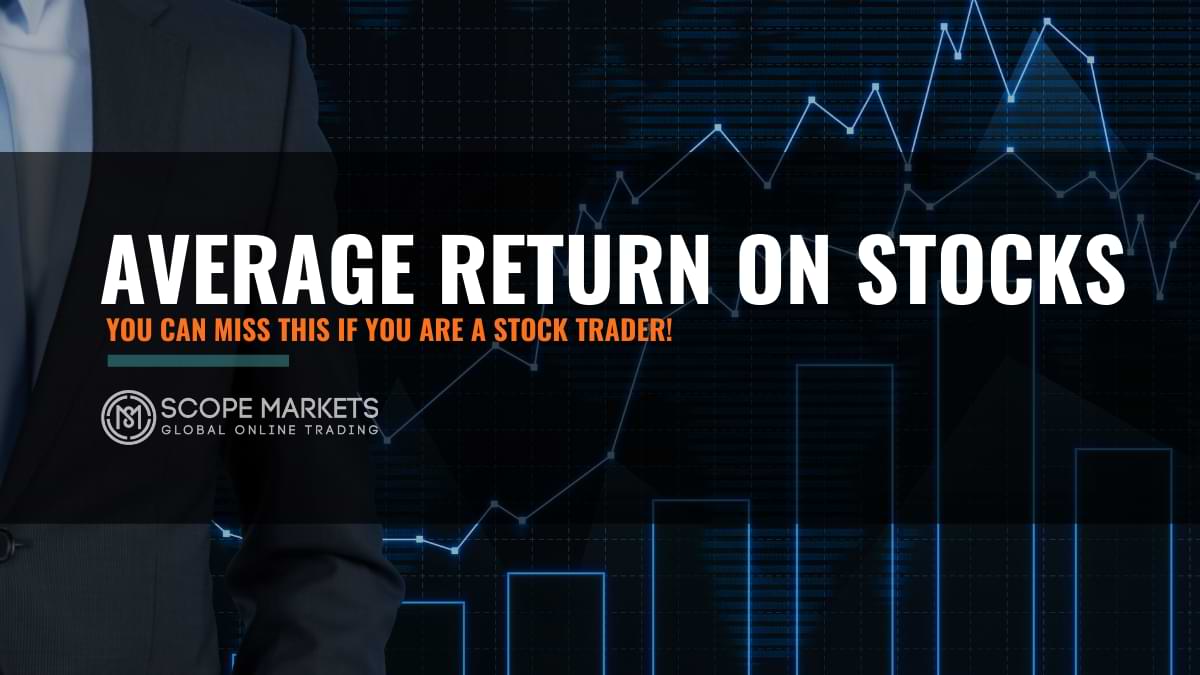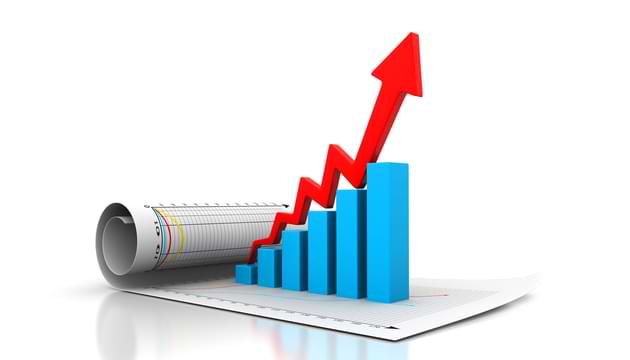Average Return on Stock Investments

Table of Content
There are many Investors and market forecasters who use the average return on stock investments. And, they use it to find out the previous returns for stock or bond. The average return is also utilized to set the output of an organization’s portfolio.
Different stock investments and their average return are generally checked over various periods. And, it involves different market norms like the S&P 500 and the DJIA.
The Standard & Poor’s or S&P 500 involves a market cap of the five hundred biggest U.S. shares. Firms like Apple or Microsoft with a huge market cap will get a gross impact on the index review.
The DJIA is an index composed of 30 big caps, larger industrial businesses. Over time the meaning of industry has been generally extended to cover tech firms. As well as different major important organizations. General Electric is a single real member of the index still involved. At present, the Dow involves organizations such as Walmart, Apple, Boeing, and Microsoft.
The Standard & Poor’s 500 and the DJIA are 2 of the hugely valued and essential stock market norms. And are generally used as a substitute for the market. Past this, different stock market standards show not only big-cap stocks. But small caps, medium-caps, outside stocks, and many others. It can be useful to practice these standards. Thus, to assess the stock, ETF, or mutual fund review, you can consider investing in it.
When checking stock investments’ previous performance, this performance mustn’t show future occurrences.
In different words: You can consider average stock return with a huge pinch of salt.
Find the Data of Average Return or Medium Return in Stocks.
- The stock market’s medium or average return is approximately 10%.
- Bonds can offer a return of approximately 5 to 6% on average for each year.
- An investment of $1000 in the S&P 500 has over tripled in cost since 2009.
- The foreign stock market went beyond$85 trillion in the year 2019.
- In 2019, the international stock market increased by 24%.
- In 1931, the S&P 500 index was reduced by 47%, the worst on the account.
- The National Association of Securities Dealers Automated Quotations exchange or NASDAQ involved a huge growth of 35% in 2019.
No one understands this better than shareholders who lost huge cash in the recession and the .com era. These are the two very recent and drastic separations of the global stock business.
But, short-term wrecks must not control you. The average return can give a port for your cash (or somewhat, their worth) in an extensive period.
Trade 50+ popular shares with low margin requirements.
Recent Years’ Average Returns in Stock Markets

The average returns provided by the S&P 500 and the DJIA over the previous 2 years show how much returns can differ each year.
The DJIA Recent Returns:
- Whole return in 2017 is 29.11%
- Whole return in 2018 is -3.48%
The S&P 500 Recent Returns:
- Whole return in 2017 is 21.83%
- Whole return in 2018 is -4.38%
In the previous phase of 2019, both stock market norms have increased much. The DJIA increased by 15.40%, and the S&P 500 rose by 18.54% over June 30.
Whereas these are successful stock market norms, they’re composed of personal stocks. Utilizing the S&P 500 index as an instance, NVIDIA’s stock reduced more than 31% for the 12 months. Whereas Starbucks’ stock was increasing by more than 95% across the same period.
The Russell 2000 index that is a norm for small-cap stocks had this performance over the previous 2 years:
- Whole return in 2017: 14.65%
- Whole return in 2018: -11.01%
In the previous phase of 2019, the Russell 2000 stocks increased by 16.98% for June 30, 2019.
The stock market is not restricted to household U.S. stocks. There are many foreign stock norms too. One of the most followed is the MSCI EAFE stock index. EAFE is generally known for Europe, Africa, and the Far East. This is the norm of stocks from advanced non-U.S. nations.
The stock index of MSCI EAFE had this review more than the previous 2 years:
- Whole return in 2017: 25.03%
- Whole return in 2018: -13.79%
Earlier in 2019, the MSCI EAFE stock index was up by 14.09% for the year-to-date ended on June 30, 2019.
Past or Previous Returns Offered in Stock Market
It can be best to consider average stock return more than longer periods too.
Returns Based on 10-year Investment
The average returns of these standard indexes for the ten years finishing on June 30, 2019, depicts:
- The returns of the S&P 500 are 14.70%
- The returns of DJIA is 15.03%
- The returns of Russell 2000 are 13.45%
- The returns of MSCI EAFE are 6.90%
The returns for the S&P 500 as well as DJIA are both well over previous averages. This period includes the present bull market for stocks. That started at the base of the economic crisis market drop in March 2009 on the basis of the fiscal crisis of 2008-09. A bull market for stocks is one that is growing. It is generally considered by continued growth in share costs and investor trust. Also, this trend would stay for the future.
Returns Based on 20-year Stock Investments
By thinking of the average returns from the stock investment of these indexes for the twenty years on June 30, 2019, show that:
- The average returns of the S&P 500 are 5.90%
- DJIA returns are 7.03%
- Returns of Russell 2000 are 7.70%
- MSCI EAFE’s returns are 4.00%
This is an unusual time as it involved the market spike in 2000. The .com drop from the initial 2000 during most of 2002 also included the attack of 9/11 in 2001.
This period also involves the whole effect of economic crises. That observed big losses over the board with all regions of the stock market. Thus, involving these 4 standards in 2008.
- The returns of the S&P 500 are -37.00%
- DJIA at -31.93%
- Russell 2000 at -33.79%
- MSCI EAFE at -43.38%
These average returns shown the most critical period since the period of the depression in 1930.
Returns Based on 30-year Stock Investments
This time starts less than 2 years later, the Black Monday crash of October 19, 1987. When the DJIA reduced by 508 points, and, which changed to 22.6% of its worth. Although, we have noticed much bigger point drops due to profits in the main indexes’ worth. As this is still regarded as big market development.
- DJIA is at 10.99%
- Russell 2000 at 9.29%
Long-term Average Returns Provided by Stocks Investment
As evaluated by the S&P 500 index from 1957-2018, the long-term returns of the stock investments are around 7.96%.
As we noticed all over the period from 2000 to 2002 and from the closing of 2007 by early 2009. The stock market can stage base changes occurring in notable alternate losses.
What this signifies for investors is not to stay away from the stock market. But, apart from that, a business plan and an investment plan are generally needed. Your investments must match your time-frame for cash, risk threshold, and different factors. Say, for stocks required in the next year, it is sensible to keep these funds in reduced risk and a liquid account.
More recent investors usually have a greater time limit and can carry higher risks. Experienced investors don’t have much time to improve from a big stock market change. Also, should locate their trade portfolios as per that condition.
Different investing experts list index stocks as a smart method to invest. This idea involves many merits. Over the previous 30 years, it has become very tough for existing fund directors to own or not own stocks in the fund’s holdings. Also, to surpass the index funds’ performance that follows record indexes such as the S&P 500 and others.
The main thing is to consider relevant asset categories for your portfolio. Also, to know low-cost carriers such as index mutual funds and ETFs for many stock allocations. When considering index funds, get a fund that buys a stock index that you may know. As well as that creates sense as a significant part of your trade portfolio.
Which is the Best Way to Get the Average Return?
A lifelong buy-and-hold investment is the finest method to get average returns.
Investing specialists such as Warren Buffett and economist Benjamin Graham state the best method to make wealth is to hold investments for the long-term. That is a strategy known as buy-and-hold investment.
There is a reason why this is workable. Whereas investments are probable to rise and fall with time. Thus, keeping them for an extended period helps smooth out the rise and fall. Similar to the S&P 500‘s differences noted before, holding investments for the long-term can assist investments and returns to come nearer to that average.
References
Wealth Simple – Average stock market return
Corporate Finance Institute – Average return
Business Insider – Average stock market return
Spend Menot – Average stock market return
Bottom Line
The stock market is not a kind of yard. True people invest cash into real businesses.
Sometimes, they drop their record stock investments as they made the incorrect investment.
We hope that the above stats showed you that the average stock return is not undervalued. But, investors must consider the long-term investment.
Disclaimer: This material is a marketing communication and shall not in any case be construed as an investment advice, investment recommendation or presentation of an investment strategy. The marketing communication is prepared without taking into consideration the individual investors personal circumstances, investment experience or current financial situation. Any information contained therein in regardsto past performance or future forecasts does not constitute a reliable indicator of future performance, as circumstances may change over time. Scope Markets shall not accept any responsibility for any losses of investors due to the use and the content of the abovementioned information. Please note that forex trading and trading in other leveraged products involves a significant level of risk and is not suitable for all investors.










